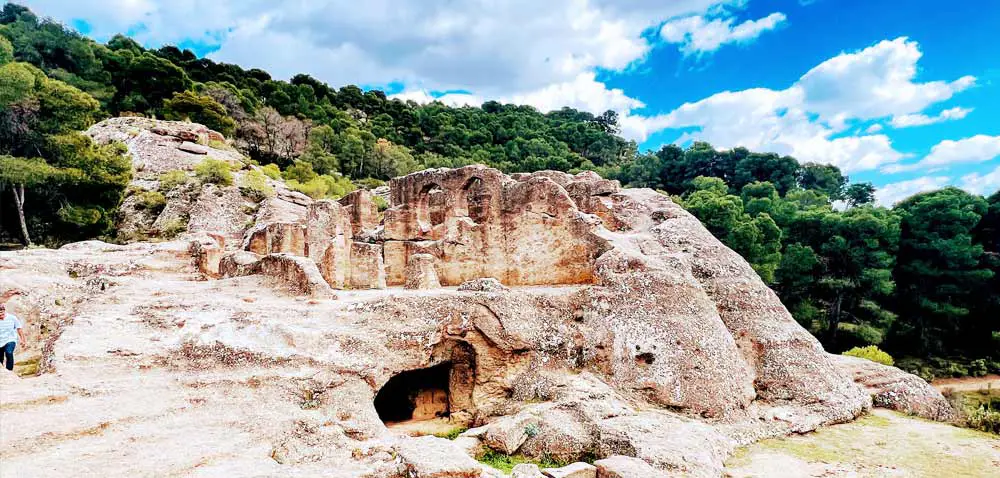Bobastro
Unearth the secrets of Malaga's Bobastro Ruins
Bobastro, with its remarkable landscape and storied past, offers a unique opportunity to immerse yourself in the rich tapestry of Al-Andalus's history while also taking in the stunning natural beauty of the Malaga countryside.As you walk the ancient paths and discover the fascinating relics of Bobastro, you'll be transported back in time, gaining insights into the lives of those who once called this place home. Every moment spent at Bobastro is a chance to deepen your understanding and appreciation of this extraordinary site and its people.
In the end, it's not just the tangible remnants of the past that draw visitors to Bobastro, but the stories and the spirit of the people who once lived and fought here... ensuring that the legacy of Bobastro will endure for generations to come.
- Ultimate Malaga History & Tapas - All Included Full Experience
- Taste of Malaga Tour : Tapas, History and Local Customs
- Best of Málaga City Tour
- Sailing and Dolphin Watching in Marbella
- Skip the Line: Museo Picasso Malaga Entrance Ticket
- The Best of Malaga in 2 Hours on a Segway
- Arabian Baths Experience at Malaga’s Hammam Al Andalus
- Day Trip: Granada Alhambra Tour from Malaga
Historic Overview
The history of Bobastro is intrinsically tied to the fascinating story of Omar ben Hafsun, a figure who played a pivotal role in the region's turbulent past. In the year 880, Hafsun revolted against the emir of Cordoba, establishing the village of Bobastro as the heart of his dominion and the center of his resistance movement.Driven by a desire to challenge the oppressive rule of the emir, Hafsun gathered a diverse group of supporters from various backgrounds, including Mozarabic, Muladi, and Berber communities. United under a common cause, they fortified themselves within the natural stronghold of Bobastro, defying the power of Cordoba and carving out a small, independent territory in the process.
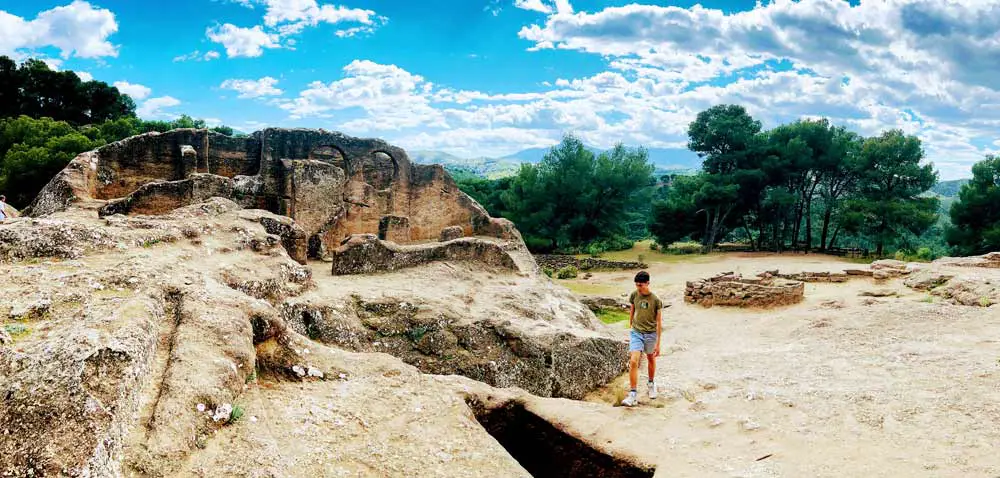
** Mozarabic Cave Church, Bobastro
Hafsun's rebellion was not just a struggle for political power; it was also a fight for religious and cultural identity. His conversion to Christianity in 899 further solidified his commitment to protecting the rights and beliefs of the diverse inhabitants of his domain.
The fierce resistance led by Hafsun and his followers at Bobastro continued for more than 50 years, shaping the region's history and leaving an indelible mark on the landscape of southern Spain.
How to Reach Bobastro
Bobastro is nestled amidst breathtaking natural surroundings that are sure to enchant any visitor. The village is situated in the mountainous region in the province of Malaga, with rolling hills and rugged cliffs providing a dramatic backdrop for the ancient site. The verdant vegetation and wildflowers add vibrant splashes of color to the landscape, creating a harmonious blend of history and natural beauty.A journey to the site of 'Bobastro' is an adventure in and of itself. The easiest way to reach it is by car (cheap car rentals), as there are several major roads connecting the village to other nearby cities.
From Malaga, Bobastro is only 62 kilometers (one-hour driving). Take the A-357 north to the MA-448, then follow the Álora-Ardales road, which lies approximately 2 km north of El Chorro on the southern edge of the breathtaking Gaitanes Gorge. From there, a paved track winds its way up the hill of 'Las Mesas de Villaverde', where you'll find a pedestrian access point leading to the ruins.
Distances to Bobastro
| From | To | Distance |
| Malaga | Bobastro | 59 min (62 km) |
| Granada | Bobastro | 2 hr 1 min (152 km) |
| Ronda | Bobastro | 1 hr (61 km) |
| Antequera | Bobastro | 57 min (37 km) |
| Álora | Bobastro | 33 min (19 km) |
| El Chorro | Bobastro | 14 min (7 km) |
| Ardales | Bobastro | 23 min (12 km) |
| Caminito del Rey | Bobastro | 20 min (9 km) |
Path to the Bobastro Site
Once you reach the main site of Bobastro, you will find a path that leads you through a pine forest above. Follow the path for about 20-minutes. Along the way you will encounter ancient steps carved out of the rock... worn by centuries of use. As you reach the top, you will enjoy impressive views of the surrounding countryside, rolling hills stretch into the distance, dotted with quaint villages and olive groves that glisten in the sun.
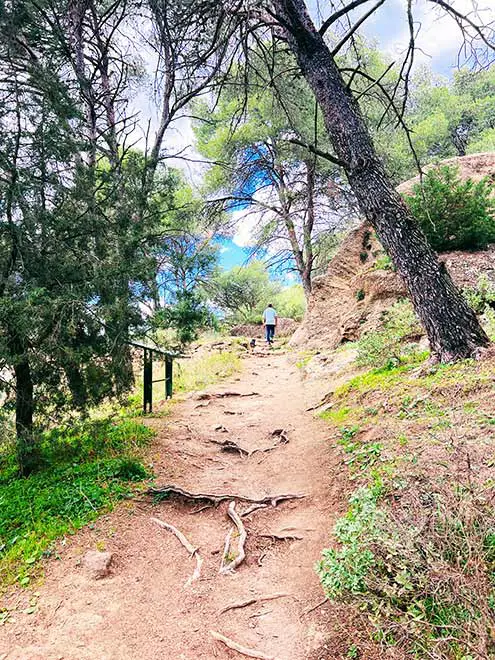
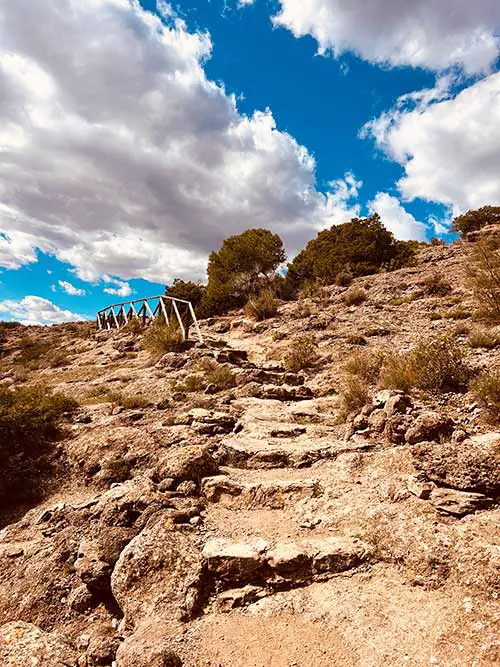
** Paths to the Bobastro Ruins
Mesas de Villaverde and the Fortification
As you crest the hill of Las Mesas de Villaverde, the dramatic remains of Bobastro's fortification come into view, hinting at the village's strategic importance during its time as a center of rebellion.The fortification, which served as a bastion of resistance against the forces of the emir of Cordoba, stands as a silent witness to the courage and determination of the people who made their stand here. The rugged landscape and the commanding views of the surrounding countryside offered a natural advantage to the inhabitants of Bobastro, who leveraged the terrain to protect their homes, their faith, and their very way of life.
Theories About the Location of Bobastro
The rich history of Bobastro has sparked the curiosity of scholars and enthusiasts alike, leading to a lively debate about the exact location of this enigmatic village. While many have come to accept the site at Mesas de Villaverde as the heart of Bobastro, an alternative theory has emerged, proposing that the village was, in fact, situated within the city of Ronda.Regardless of its precise location, the story of Bobastro serves as a fascinating window into a tumultuous period in Andalucia, a reminder of the passions and struggles that shaped the region's past.
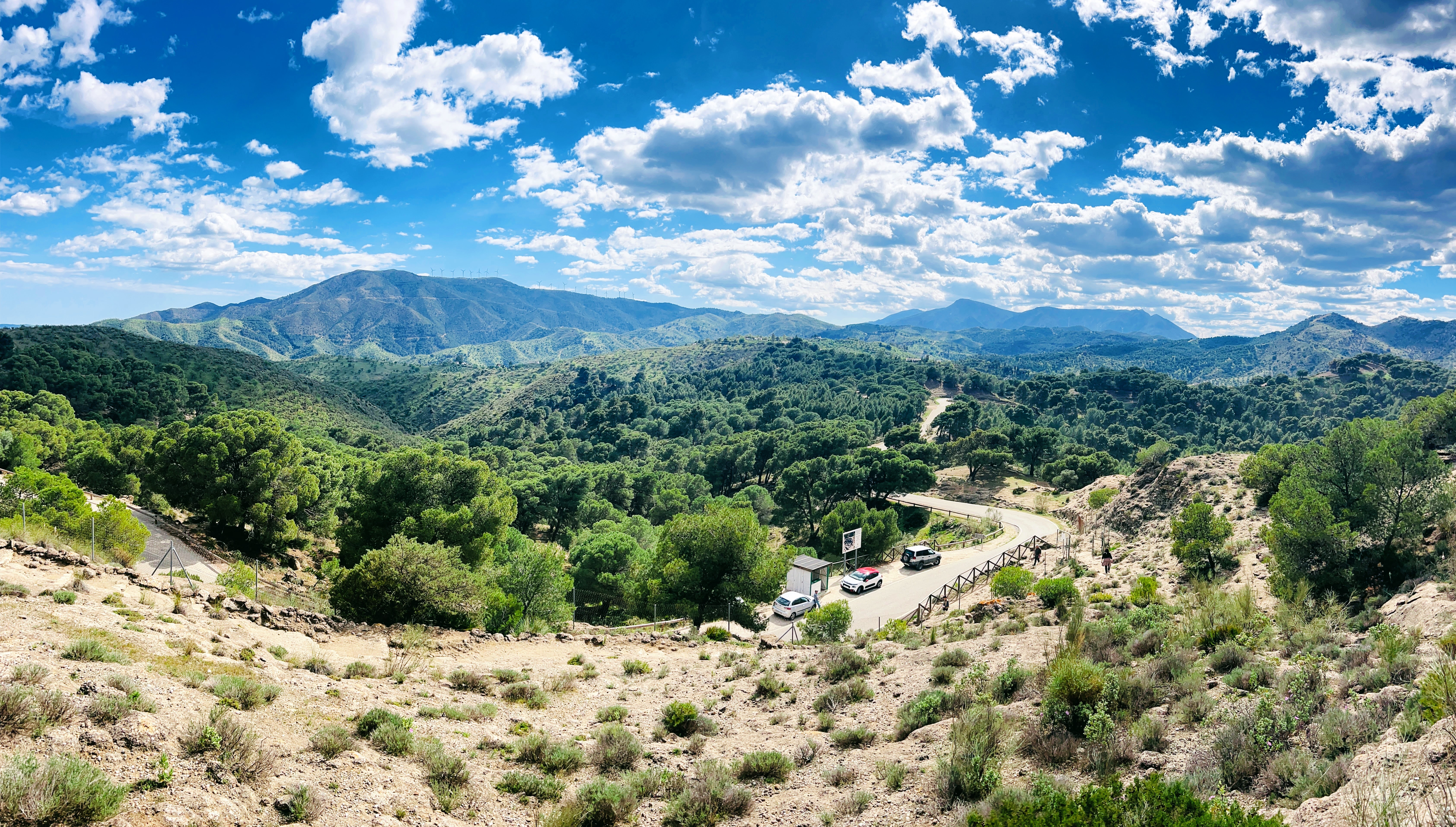
** Natural Park Surrounding the Bobastro Ruins
Discoveries and Excavations at Bobastro
Francisco Javier Simonet
The mysteries of Bobastro began to unravel in 1869 when the dedicated historian Francisco Javier Simonet ventured into the area known as Mesas de Villaverde. Amidst the rugged terrain along the Guadalhorce River, Simonet made a groundbreaking discovery, identifying the location of the elusive village of Bobastro. His diligent research and exploration of the site helped shed light on this once-forgotten settlement and its significance in the history of al-Andalus.Simonet's findings provided invaluable insights into the ancient village, capturing the interest of historians and researchers alike. His work laid the foundation for future excavations and discoveries at Bobastro, helping to piece together the remarkable story of this unique site in southern Spain.
Cayetano de Mergelina
Building on Simonet's earlier findings, the renowned archaeologist Cayetano de Mergelina made a significant contribution to the understanding of Bobastro's history with his discoveries in 1927. Mergelina unearthed the ruins of a possible episcopal basilica, skillfully carved into the sandstone rock of the site.His work at Bobastro brought to light the incredible craftsmanship and architectural ingenuity of the people who once inhabited the village. The discovery of the basilica, along with the continued study of the site, helped to further solidify the importance of Bobastro as a cultural and historical treasure in the region.
Two Amazing Discoveries at Bobastro...
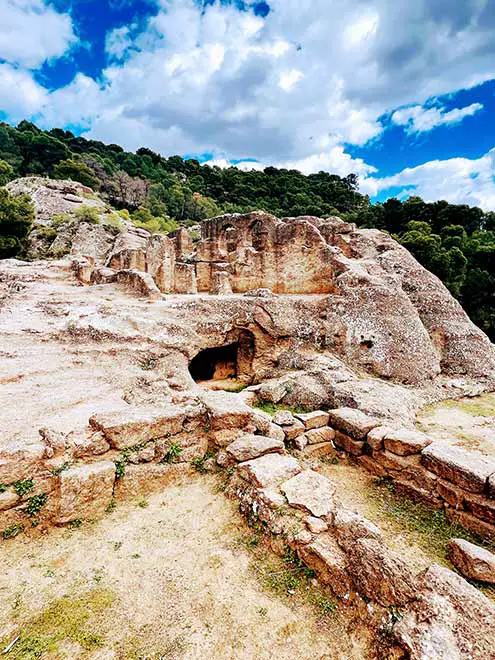
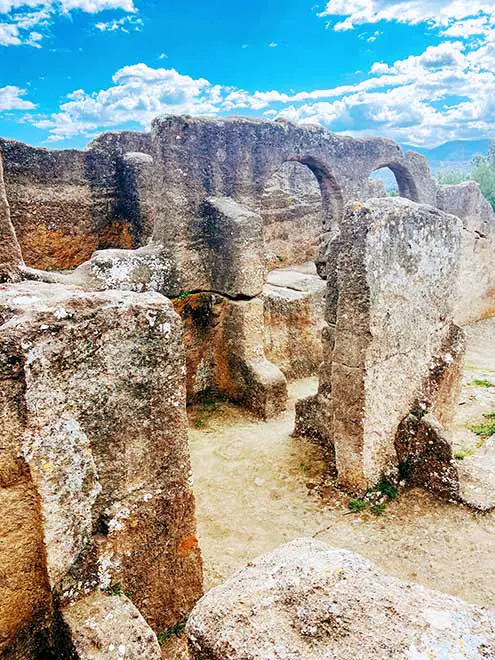
** Mozarabic Cave Church, Bobastro
The Hidden Mozarabic Cave Church
Hidden among the craggy hills and ancient ruins of Bobastro lies a breathtaking discovery: the Mozarabic rock-hewn church which was carved directly into the sandstone.Omar ben Hafsun's conversion to Christianity in 899 led to the construction of this remarkable church, which is believed to have been built in the late ninth or tenth centuries. The church, a striking example of Mozarabic architecture, is the only known basilica of its kind in al-Andalus, making it an invaluable piece of history.
The church's basilica plan features three naves, a transept, and a chevet with three apses, each intricately carved into the living rock. Despite its destruction by Abderramán III in 928, remains of the church still stand proudly, inviting visitors to pause and reflect on this sacred place.
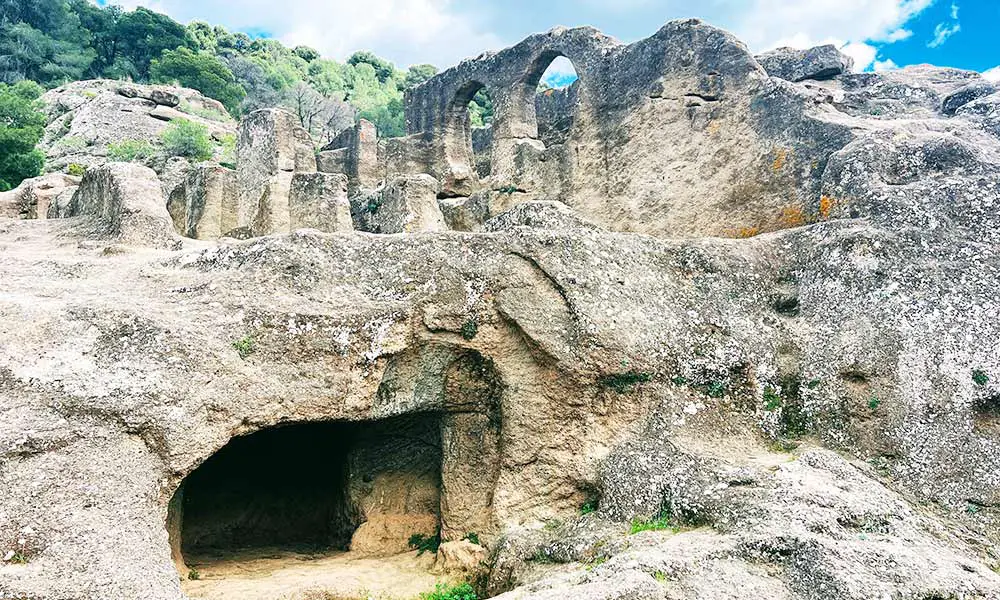
** Mozarabic Cave Church, Bobastro
The Mozarabic Monastery
In 1986, another groundbreaking discovery was made at Bobastro that would forever change the way historians view this site. As archaeologists carefully unearthed the secrets of the past, they stumbled upon the remains of one of the earliest known monasteries in the province of Malaga... a stunning Mozarabic Monastery.Believed to have been constructed before the nearby rock-hewn church, this monastery was designed in the suburban style seen in Cordoba. The excavations revealed a large rectangular enclosure that surrounded a spacious courtyard. Within this central area, a cistern and silo carved into the rock provided the inhabitants with the essentials of water and grain.
A few steps, also etched into the stone, granted access to the church and monastery complex. The presence of tombs nearby suggests that the site also served as a necropolis, providing a final resting place for the devout who lived, prayed, and worked within these sacred walls.
What Really Happened at Bobastro...
And Who Was Omar ibn Hafsun?
The intriguing story of Omar ibn Hafsun is a vital part of Andalucia's history. Born in the scenic village of Parauta, Omar came from a family with Visigoth roots that had converted to Islam, adopting the Muladi identity. It is thought that his family held a certain degree of influence in the region, as evidenced by his uncle's ability to supply him with armed support when needed.Omar's ascension to power, however, was anything but smooth. Fleeing to Tahert, now modern-day Algeria, after a violent conflict, he found himself working as an apprentice for a tailor. In a twist of fate, an elderly man from Al-Andalus visited the shop where Omar worked, knelt before him, and prophesied that he would one day reign over a vast kingdom.
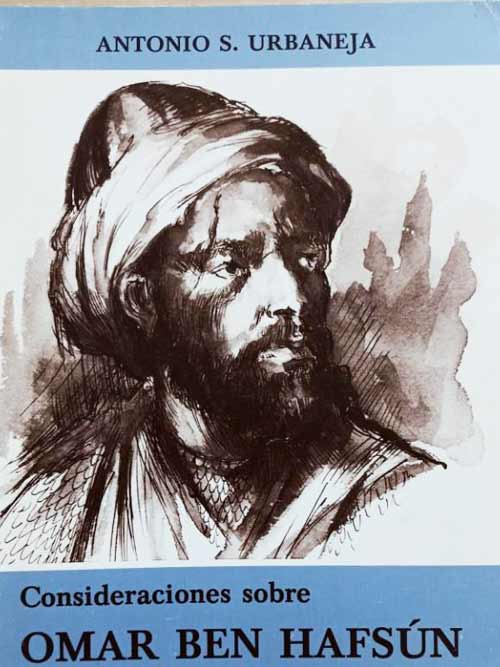
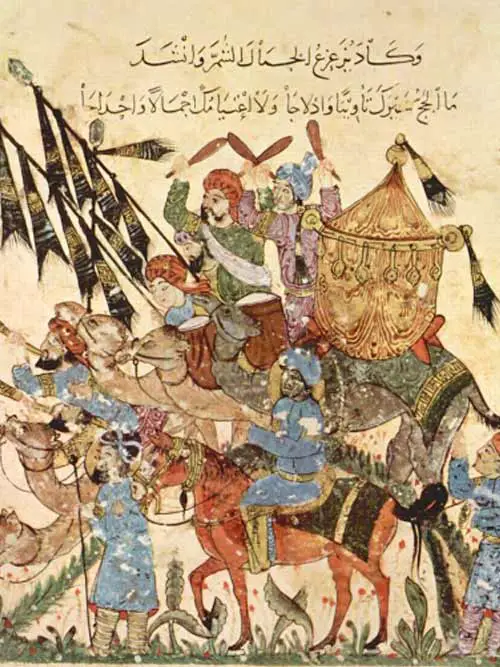
** Omar ibn Hafsun, Leader of Bobastro
When Omar returned to Al-Andalus in 880, he began to gather a group of like-minded individuals unhappy with the tax burdens imposed by Cordoba. With a devoted band of supporters, he established a stronghold at Bobastro, from which he would defy the authority of Cordoba. Initially, the Umayyads dismissed him as a mere outlaw, but it soon became apparent that Omar was destined for something far greater.
Expansion of Power and Territories
As Omar ibn Hafsun continued to assert his presence in the region, his ambitions grew, and so did the territories under his control. At the height of his power, he ruled over an area that stretched from Malaga to Jaen and from Cadiz to Granada. His tenacity and strategic prowess attracted both Muladi and Mozarab supporters, who were eager to throw off the yoke of Cordoban authority.His ever-expanding realm posed a significant threat to the Emirate of Cordoba. Omar successfully fended off several campaigns launched by the emir's forces, further solidifying his position as a force to be reckoned with. It wasn't long before the rulers of Cordoba began to take him seriously, acknowledging the impact he had on the political landscape of Al-Andalus.
Omar's expanding territories became a symbol of resistance against the oppressive rule of the emir, and his influence reached far beyond the borders of his stronghold at Bobastro.
Conversion to Christianity
In a twist of fate that caught many by surprise, Omar ibn Hafsun converted to Christianity around 899. This decision had a profound effect on both his followers and the course of his rebellion. The choice to embrace Christianity was a strategic one, as it allowed Omar to garner even more support from the local Christian population who had long been subjugated by the ruling Muslim elite.Omar's conversion also sent ripples throughout Al-Andalus, as it marked a significant departure from the religious norms of the time. It signaled to the emir of Cordoba that the stakes had been raised, and Omar was no longer just a political rebel but also a religious one. This act of defiance further fueled the flames of resistance, making Omar a symbol of hope for those who sought religious and political freedom.
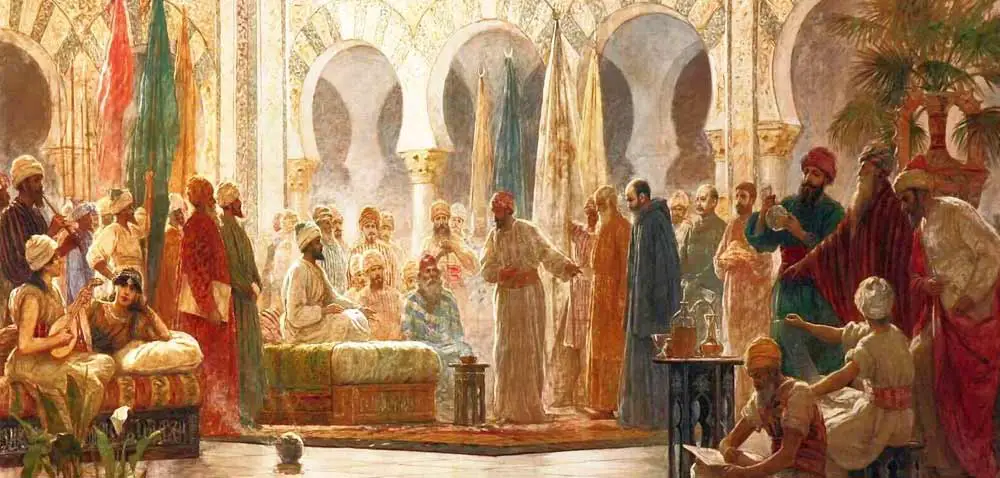
** Abderraman III, the Caliph that Conquered Bobastro
His Decline
Despite Omar ibn Hafsun's valiant efforts and the support he garnered; his rebellion began to falter as the years wore on. The strength of the Umayyad forces eventually took a toll on Omar's campaign, and infighting among his own followers further weakened his cause. Disagreements over leadership and the direction of the rebellion sowed seeds of discord that would ultimately contribute to its downfall.The rise of the powerful Abderraman III to the throne in Cordoba spelled the beginning of the end for Omar's rebellion. Abderraman proved to be a formidable foe, and his relentless military campaigns slowly chipped away at Omar's territories.
Abderraman III's Conquest and Proclamation as Caliph
As the flames of rebellion flickered at Bobastro, the emirate of Cordoba underwent a significant shift in power. In 912, the ambitious and determined Abderraman III ascended to the throne, vowing to bring peace and stability to al-Andalus. He quickly identified the lingering resistance at Bobastro as a major obstacle to his plans for a unified realm.Abderraman III embarked on a relentless campaign to subdue the rebels, conquering key strongholds and steadily closing in on Bobastro. Finally, on January 19, 928, the long-standing bastion of resistance fell to Abderraman's forces, marking a turning point in the history of the region.
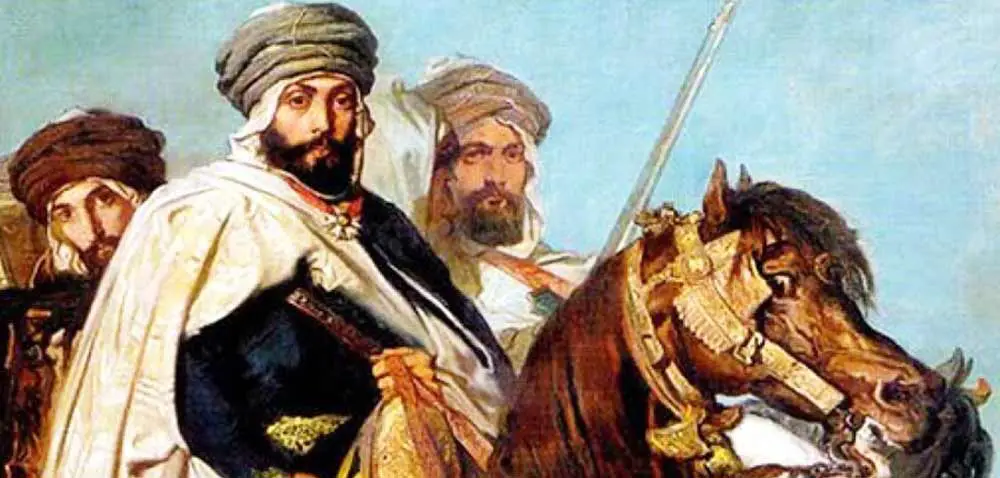
** Abderraman III at Bobastro
Having triumphed over the forces that had defied Cordoba rule for decades, Abderraman III wasted no time in asserting his authority. He sent a letter to be read in every mosque, proclaiming his victory over Bobastro and denouncing the village as "the base of polytheism, the abode of infidelity and lies, the glory and refuge of the Christianity that took refuge and rested there."
With the fall of Bobastro and the suppression of the rebellion, Abderraman III cemented his position as the undisputed ruler of al-Andalus. Shortly thereafter, he proclaimed himself caliph, ushering in a new era of prosperity and cultural achievement that would leave a lasting impact on the history of southern Spain.
The Ultimate Defeat of Omar ibn Hafsun
Despite the defeat of his rebellion, Omar ibn Hafsun's legacy lives on through the cultural and historical sites found throughout the region. His story, marked by passion and conviction, serves as a reminder of the complexities of Al-Andalus's past. As visitors explore the captivating ruins of Bobastro, they are transported back in time, witnessing firsthand the remarkable life of a man who fought for his beliefs and inspired countless others to do the same.Cultural Significance of Bobastro
As we take a step back and look at the fascinating tale of Bobastro, we come to appreciate the rich historical and cultural significance of this ancient site. Nestled among the rugged landscapes of Andalucia, Bobastro stands as a testament to the complex and storied past of Al-Andalus. Here, the valiant efforts of Omar ibn Hafsun and his followers to resist the Umayyad rule unfolded, leaving behind an indelible mark on the region's history.The unique blend of architectural styles found at Bobastro, particularly in the Mozarabic rock-hewn church and monastery, showcases the diversity of cultures and religions that once thrived in the region, and its fortifications, and necropolis further enrich our understanding of how the inhabitants of Bobastro lived and fought for their beliefs.
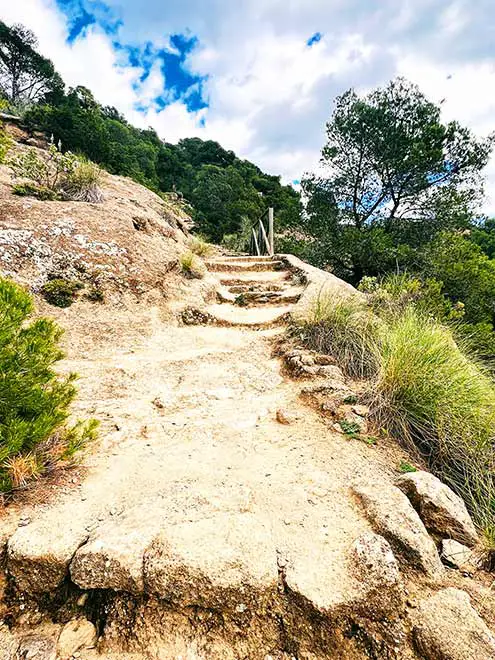
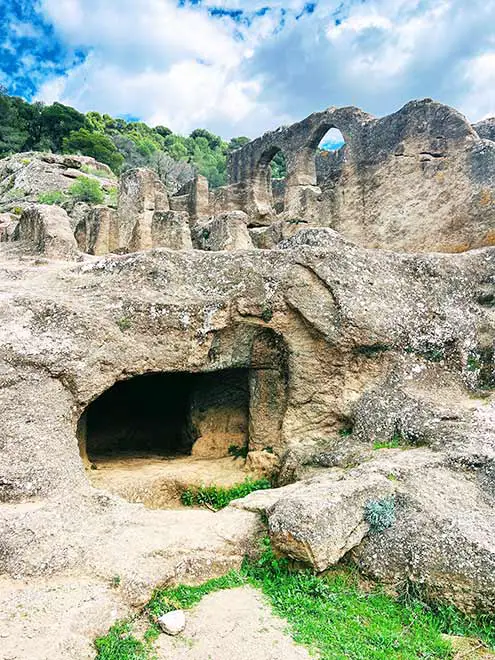
** Stone Ruins at Bobastro
For the curious traveler, Bobastro is more than just a collection of ancient ruins; it's a gateway to a captivating period of history that continues to inspire wonder and awe. As we wander through the remnants of this bygone era, we can't help but feel a connection to the vibrant tapestry of stories that unfolded here, forever shaping the course of Al-Andalus's history.
What to See Near Bobastro
The Bobastro area is also home to the famous Caminito del Rey and the awe-inspiring Gaitanes Gorge, a spectacular geological formation carved by the Guadalhorce River. Its towering limestone walls and narrow passages have been attracting tourists and adventurers for years.The nearby village of El Chorro, just 2 km south of Bobastro, is known for its stunning turquoise lakes, offering picturesque spots for picnics and leisurely walks. El Chorro is also famous for its world-class rock climbing opportunities, drawing enthusiasts from all over the globe.
In the wider vicinity, you'll find the city of Ronda, which is steeped in history and boasts remarkable architectural marvels, such as the Puente Nuevo bridge and the Plaza de Toros, one of Spain's oldest bullrings. With its rich cultural heritage and close proximity to Bobastro, Ronda makes for a splendid day trip while exploring the region.
Here are all the top sights to visit near Bobastro:
- Caminito del Rey: Traverse the breathtaking suspended walkways that run along the steep walls of the El Chorro gorge, offering unparalleled views.
- Ardales Cave: Marvel at prehistoric cave paintings and impressive geological formations inside this ancient cave system.
- Embalse del Conde de Guadalhorce: Relax by this serene reservoir, enjoying the surrounding nature and opportunities for kayaking or paddleboarding.
- El Chorro Gorge: Hike through the awe-inspiring limestone gorge, taking in the dramatic cliffs, abundant wildlife, and spectacular views.
- Ardales Castle: Explore the remnants of this hilltop fortress, offering a glimpse into the region's rich past and panoramic vistas of the surrounding landscape.
- Antequera: Visit this historical town, boasting ancient dolmens, the Alcazaba fortress, and the iconic El Torcal natural park.
- Ronda: Explore this picturesque town, famous for its dramatic cliffside setting, ancient bridges, and historic bullring.
- Málaga: Discover the birthplace of Picasso, featuring the Picasso Museum, Alcazaba, and the bustling La Malagueta beach.
- Marbella: Stroll through the luxurious coastal town, known for its charming old town, high-end shopping, and lively marina.
- Nerja: Unwind in this coastal gem, offering stunning beaches, the mesmerizing Balcon de Europa, and the fascinating Nerja Caves.
- Grazalema: Wander through this traditional white village, nestled within the Sierra de Grazalema Natural Park, known for its hiking trails and diverse flora and fauna.
- Frigiliana: Admire the beautifully preserved Moorish architecture and winding streets of this idyllic hilltop village.
- El Torcal de Antequera: Hike among the striking limestone rock formations in this unique karst landscape, home to diverse wildlife and captivating scenery.
Save money on your next trip with our favorite travel websites!
| Find the Cheapest Hotels: | |
| The Largest Selection of Villas & Apartments: | |
| Cheapest, Most Reliable Car Rentals: | |
| Best Bus & Train Fares: | |
| Huge Selection of the BEST Tours & Activities | |
| Discount Tickets to Museums & Attractions | |
